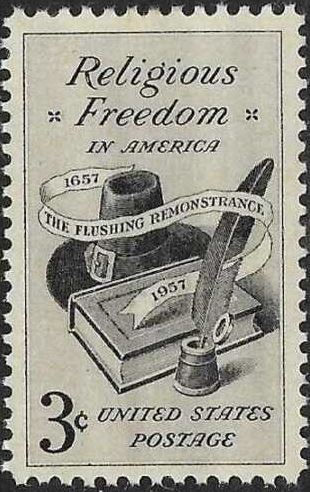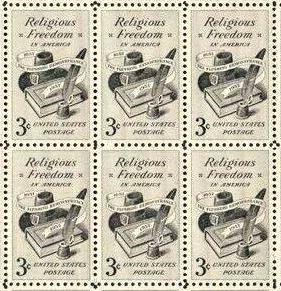Elizabeth Feake was the second wife of Capt. John Underhill. They were married in 1658 in Oyster Bay (New York) and Elizabeth converted John to the Quaker faith.

Like the Underhill family, Elizabeth Feake's family was also influential in colonial America. Her mother was Elizabeth (Fones) Feake, born on January 21, 1610, in Groton, Suffolk, England, (shown above) a daughter of Thomas Fones, a London apothecary. Her mother was Anne (Winthrop) Fones, sister of John Winthrop, the eventual Governor of Massachusetts Bay Colony.
Robert and Elizabeth's second daughter, Hannah, was also a devoted Quaker. In 1656, when Dutch Director-General, Pieter Stuyvesant banned the assembling and worshiping outside of the Dutch Reformed Church, the trouble began. The persecution of Baptists and Quakers became so severe that in 1657, thirty of Flushing's townspeople signed the Flushing Remonstrance, formally protesting the ban. It was written by Edward Hart, and is considered a precursor to the Constitution and the First Amendment in the Bill of rights. The petition was printed in Ecclesiastical Records, State of New York, Vol. 1, p. 412-413, shown here:

Signers of the Flushing Remonstrance, 1657:
Nicolas Blackford
George Clere
Elias Doughtie
Edward Farrington, magistrate
Tobias Feake, sheriff
Antonie Field
Robert Field, Sr.
Robert Field, Jr.
John Foard
Edward Griffine
Nathaniel Hefferd
Benjamin Hubbard
John Mastine
Michael Milner
William Noble, magistrate
Nicholas Parsell
William Pidgion
Henry Semtell
Richard Stockton
John Store
Edward Tarne
William Thorne Sr.
William Thorne, Jr.
Nathaniel Tue
Micah Tue
Phillip Udall
George Wright
Stuyvesant stood firm in his stance against religious tolerance, however. Some of the signers were arrested, including Edward Hart and the sheriff, Tobias Feake (a cousin of Elizabeth Feake). They were imprisoned for weeks, living only on bread and water. Hart was released and banished after about a month, on account of his old age and upon the petition of his family and friends, and Tobias Feake recanted after about seven weeks and was released and fined. He was also banned from holding any political office. Stuyvesant's law prevailed for several more years.
Meanwhile, in 1662, Hannah and John Bowne were holding Quaker meetings in their home, which resulted in John Bowne being arrested and deported to Holland. There he petitioned the Dutch West India Company, arguing that Stuyvesant's ban on all religions outside of the Dutch Reformed Church violated their basic human rights, and contradicted freedoms promised in Governor Kieft's Flushing Patent of 1645. Bowne's plea fell on sympathetic ears and he was granted permission to return to New Netherland (New York) with a letter instructing Stuyvesant to end religious persecution in the colony. It was the first time religious freedom was guaranteed in the New World.
Bowne recorded his account of the Flushing Remonstrance in his journal. His name is highly esteemed and memorialized in Flushing. His house, built before 1662, still stands as a historic landmark and two schools bear his name. (See "John Bowne remembered in Queens"). He lived from 1627 to 1695 and is remembered for his role in establishing freedom of religion in America.
The "Religious Freedom" commemorative stamp was printed in 1957, marking 300 years of religious freedom in America. These make a great addition to the family scrapbook! Get yours on ebay!
These make a great addition to the family scrapbook! Get yours on ebay!
Sources:
John Underhill (captain) [Wikipedia]
Elizabeth Fones [Wikipedia]
Greenwich Free Press, June 2, 2016, "Spared from the Wrecking Ball, Elizabeth Feake House was 'A Hidden Treasure under Our Noses'". [Link]
Greenwich Sentinel, July 13, 2018, "Restored Feake-Ferris House to be Unveiled at Founder's Day Reception". [Link]
Greenwich Free Press, July 18, 2018, "Found's Day Features Unveiling of Restored Feake-Ferris House c1645 in Old Greenwich". [Link]
Feake-Ferris House [Wikipedia]
John Bowne [Wikipedia]
Flushing Remonstrance [Wikipedia]



Comments